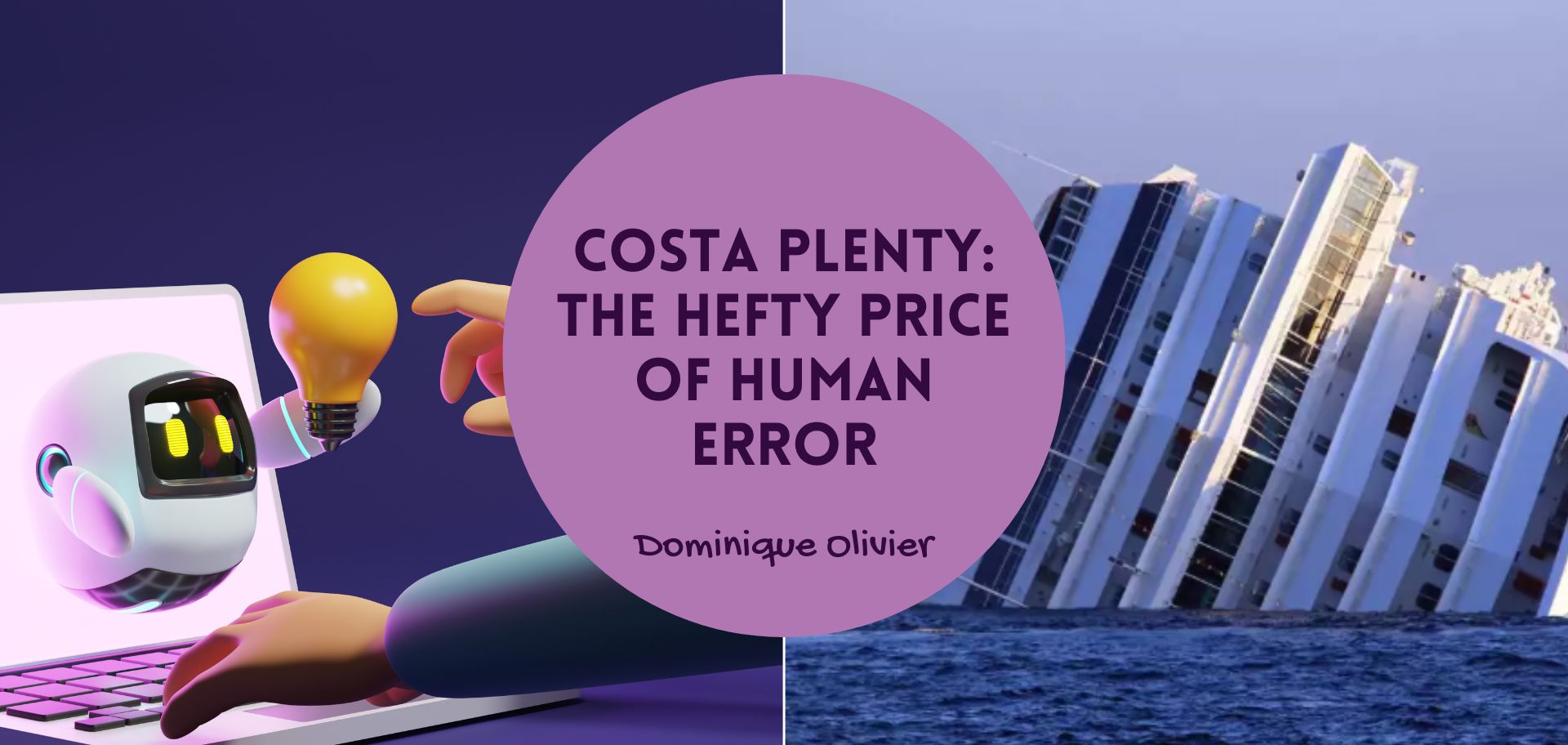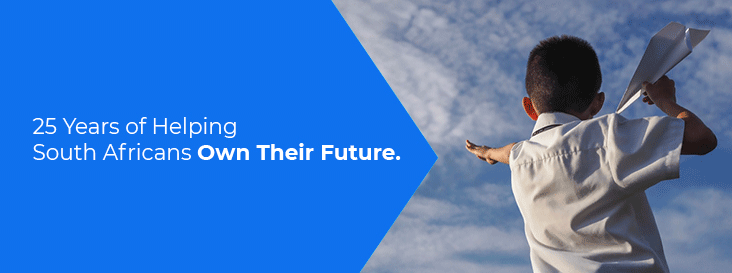It’s been 12 years since images of the cruise ship Costa Concordia, capsized in the shallow water off the coast of Isola del Giglio, made the front pages of newspapers worldwide. How did a $570 million cruise ship end up in this position? Perhaps that question is best left to the people who steered her there.
At the christening of the Costa Concordia in September 2005, the champagne bottle released by model Eva Herzigová bounced off the hull instead of breaking. According to maritime legend, this was a bad omen that spelled certain doom for the ship’s crew and passengers.
Legends and omens are not reason enough to hold such a significant financial investment back from its intended purpose though, which is why the band played on and onlookers applauded while the remarkably unbroken bottle dangled in mid-air, still suspended from the rope that swung it.
(In case you were curious, the Titanic wasn’t christened at all before her maiden voyage. That’s just as bad an omen as an unbroken bottle – and we all know how that story ended).
Superstitions, phobias, omens and old wives tales are as enmeshed with seafaring as they are with the human experience as a whole. As new fears abound with the rise of artificial intelligence and self-driving vehicles, it seems like now is as good a time as any to talk about the one thing that we don’t have to stress about with AI: human error.
A ship of dreams
In 2004, Carnival Corporation commissioned the construction of the Costa Concordia from shipbuilder Fincantieri, with the vessel being built at the Sestri Ponente yard in Genoa. Leading her class, Costa Concordia was succeeded by sister ships Costa Serena, Costa Pacifica, Costa Favolosa and Costa Fascinosa, alongside Carnival Splendor for Carnival Cruise Line. Upon their debut, the 114,137-ton Costa Concordia and her sister vessels marked a significant milestone as some of Italy’s largest and most technologically advanced cruise liners.
Costa Concordia was almost 300 metres long and outfitted with 1500 cabins spread across 13 public decks. By all accounts, the ship had the potential to be a floating goldmine. Instead, it ended up costing its owners $2 billion in victims’ compensation, refloating, towing and scrapping costs.
The man without a plan
It’s impossible to tell the story of the Costa Concordia without also telling the story of her erstwhile captain, Francesco Schettino.
Schettino was born into a seafaring lineage rooted in Meta, Campania. After completing his education at the Nino Bixio nautical institute in Piano di Sorrento, he embarked on a career with the ferry company Tirrenia. Joining Costa Crociere, a Carnival Corporation subsidiary, in 2002, Schettino served as a security officer before ascending to the position of second-in-command. In 2006 he was promoted to captain and given command of the freshly inaugurated Costa Concordia.
If you’re wondering how a security officer managed to get himself promoted to ship captain in the span of 4 years, then you’re not alone. I’ve scoured the internet but have yet to come across a logical explanation for this irregular career trajectory. What I can tell you for sure is that where Schettino went, calamity usually followed close behind.
In 2008, Schettino was in charge of the Costa Concordia when she suffered damage to her bow in Malta. His attempts to manoeuvre the ship within the port during a storm led to it being rammed against the dock. In 2010, as master of Costa Atlantica, he damaged the ship while entering the port of Warnemünde in Germany at too high a speed.
With two strikes to his name only 4 years into his captaincy, it seems astonishing that he was able to retain his position. Whether this was an oversight by his employers or the result of pulled strings we’ll probably never know. What we do know is that Schettino made a name for himself in 2012, and not in a way that made his Italian mama proud.
The Moldovan mistress and the hapless helmsman
On the evening of 13th (yes, 13th) January 2012, the Costa Concordia was scheduled to perform a sail-by salute past the island of Giglio as part of a 7-day Mediterranean cruise. The manoeuvre was a relatively standard procedure and one that captain Schettino had performed before. The idea was to steer as close to the shore as possible so that passengers could wave at people standing at the harbour.
According to various reports, Schettino was distracted from his job that evening by the presence of Moldovan dancer Domnica Cemortan on the bridge. Ms. Cemortan later confessed that she and the captain were having an extramarital affair and that she had boarded the ship without a ticket.
Schettino admitted to deactivating the alarm system for the Costa Concordia’s computer navigation before nearing the island, stating, “I was relying on visual navigation, since I was familiar with those seabeds from past experiences.” However, he soon observed waves crashing onto the reef ahead of him and realised he had steered too close to shore. In an effort to make a sudden turn, he ended up in the reef.
Acknowledging a lapse in judgement, Schettino confessed to initiating the ship’s manoeuvre too late. The ship’s first officer, Ciro Ambrosio, disclosed to investigators that Schettino had forgotten his reading glasses in his cabin and repeatedly requested Ambrosio to monitor the radar on his behalf.
So much for visual navigation, then.
Not helping the matter at all was the fact that the helmsman, Jacob Rusli Bin, spoke neither English nor Italian – the two languages that he would need to know in order to understand the orders given by the captain. When Schettino shouted at the helmsman to slow down and steer away from the rocks, the order was misunderstood. He steered towards the rocks instead, resulting in a collision that resulted in a 35-metre long opening in the hull of the ship.
Water flooded into the engine room through the opening, quickly submerging the engines and generators. Within a matter of minutes after impact, the ship was without propulsive power and no emergency electric power. It drifted towards the shore until it got caught on rocks, at which point it started listing.
A slip-up…into a lifeboat
Passengers were gathered in the dining hall when a sudden, loud bang echoed through the ship, attributed by a crew member over the intercom to an “electrical failure.” Of all things, the theme song from Titanic was playing in the dining room at the time (you can’t make this stuff up). Despite the fact that there were clear guidelines in place for disasters at sea, the crew aboard the Costa Concordia seemed to be more concerned with keeping passengers calm (by lying to them) than with ensuring their safe evacuation.
Half an hour prior to the eventual abandon-ship order, a crew member was captured on video assuring passengers at a muster station that the issues had been resolved and encouraged them to return to their cabins. However, by this point the ship had started to list approximately 20° to the starboard side, complicating the launching of lifeboats.
No mandatory lifeboat passenger evacuation drill had taken place prior to the voyage. Port authorities were not notified of the disaster until 22:42, approximately an hour after the collision, and the directive to evacuate the ship was not issued until 22:50. In the midst of the chaos, some passengers opted to leap into the water and swim towards shore, while others, prepared to abandon ship, encountered delays of up to 45 minutes as crew members hesitated to promptly lower the lifeboats.
Despite the difficulty with lifeboats, captain Schettino managed to secure himself a spot in one and make his way to shore around 23:30. At this time, the vast majority of passengers and crew were still on board. When questioned later about abandoning his post, Schettino claimed that he had “slipped on deck and fallen into a lifeboat”.
The price of failure
It goes without saying that nothing could be done to save the Costa Concordia once she had come to rest on the reef. The costs incurred in her eventual raising, refloating, towing and scrapping were three times as much as her build cost, and that is before taking into account the money paid out in lawsuits and victim compensation. The far greater cost, however, is in the 32 people who lost their lives.
Some may look at the events that transpired on the Costa Concordia on the 13th of January 2012 and remember the unbroken champagne bottle that heralded her doom. But if we inspect the story clearly, what is really at play is a compounding series of human errors – not an iceberg or a spot of bad weather in sight. From affairs to questionable promotions, language barriers to an inability to follow protocol, every element of this tragedy was coloured by human actions and their consequences.
I’m not sure that I’m ready to get into a self-driving car yet. But if I did, I would feel reassured in the knowledge that, at the very least, the AI involved is immune to the charms of Moldovan dancers.
If you’re willing to commit 46 minutes to a great YouTube video on this subject, check this out by Internet Historian:
About the author:

Dominique Olivier is the founder of human.writer, where she uses her love of storytelling and ideation to help brands solve problems.
She is a weekly columnist in Ghost Mail and collaborates with The Finance Ghost on Ghost Mail Weekender, a Sunday publication designed to help you be more interesting.
Dominique can be reached on LinkedIn here.




